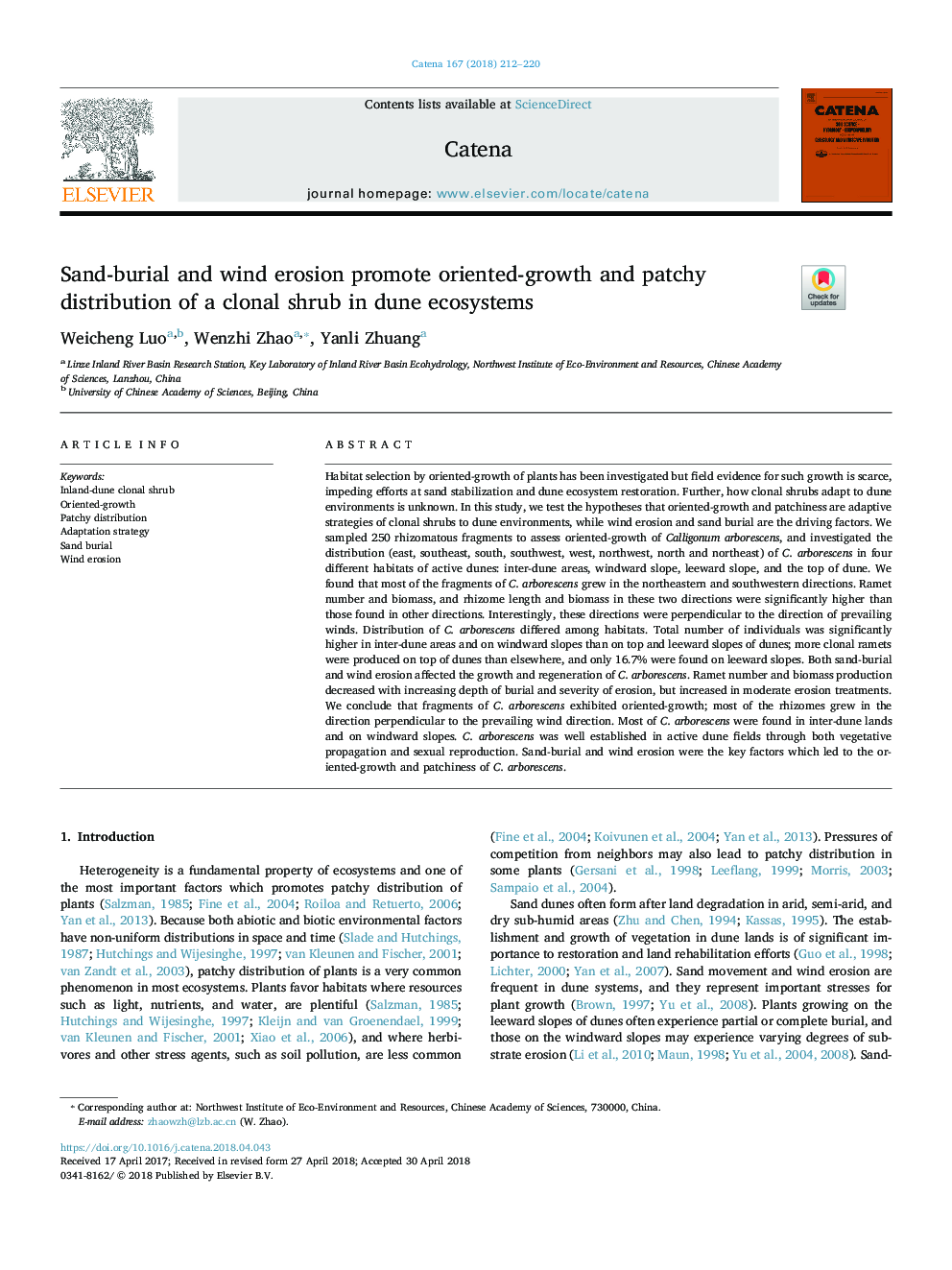| کد مقاله | کد نشریه | سال انتشار | مقاله انگلیسی | نسخه تمام متن |
|---|---|---|---|---|
| 8893481 | 1629187 | 2018 | 9 صفحه PDF | دانلود رایگان |
عنوان انگلیسی مقاله ISI
Sand-burial and wind erosion promote oriented-growth and patchy distribution of a clonal shrub in dune ecosystems
ترجمه فارسی عنوان
فرسایش شن و ماسه و باد موجب رشد گراس و توزیع پچ پاره شده یک درختچه کلونال در اکوسیستم های
دانلود مقاله + سفارش ترجمه
دانلود مقاله ISI انگلیسی
رایگان برای ایرانیان
کلمات کلیدی
درختچه کلونال درختان دون، گرایش به رشد، توزیع پچ. استراتژی انطباق، دفن شن و ماسه، فرسایش باد،
موضوعات مرتبط
مهندسی و علوم پایه
علوم زمین و سیارات
فرآیندهای سطح زمین
چکیده انگلیسی
Habitat selection by oriented-growth of plants has been investigated but field evidence for such growth is scarce, impeding efforts at sand stabilization and dune ecosystem restoration. Further, how clonal shrubs adapt to dune environments is unknown. In this study, we test the hypotheses that oriented-growth and patchiness are adaptive strategies of clonal shrubs to dune environments, while wind erosion and sand burial are the driving factors. We sampled 250 rhizomatous fragments to assess oriented-growth of Calligonum arborescens, and investigated the distribution (east, southeast, south, southwest, west, northwest, north and northeast) of C. arborescens in four different habitats of active dunes: inter-dune areas, windward slope, leeward slope, and the top of dune. We found that most of the fragments of C. arborescens grew in the northeastern and southwestern directions. Ramet number and biomass, and rhizome length and biomass in these two directions were significantly higher than those found in other directions. Interestingly, these directions were perpendicular to the direction of prevailing winds. Distribution of C. arborescens differed among habitats. Total number of individuals was significantly higher in inter-dune areas and on windward slopes than on top and leeward slopes of dunes; more clonal ramets were produced on top of dunes than elsewhere, and only 16.7% were found on leeward slopes. Both sand-burial and wind erosion affected the growth and regeneration of C. arborescens. Ramet number and biomass production decreased with increasing depth of burial and severity of erosion, but increased in moderate erosion treatments. We conclude that fragments of C. arborescens exhibited oriented-growth; most of the rhizomes grew in the direction perpendicular to the prevailing wind direction. Most of C. arborescens were found in inter-dune lands and on windward slopes. C. arborescens was well established in active dune fields through both vegetative propagation and sexual reproduction. Sand-burial and wind erosion were the key factors which led to the oriented-growth and patchiness of C. arborescens.
ناشر
Database: Elsevier - ScienceDirect (ساینس دایرکت)
Journal: CATENA - Volume 167, August 2018, Pages 212-220
Journal: CATENA - Volume 167, August 2018, Pages 212-220
نویسندگان
Weicheng Luo, Wenzhi Zhao, Yanli Zhuang,
